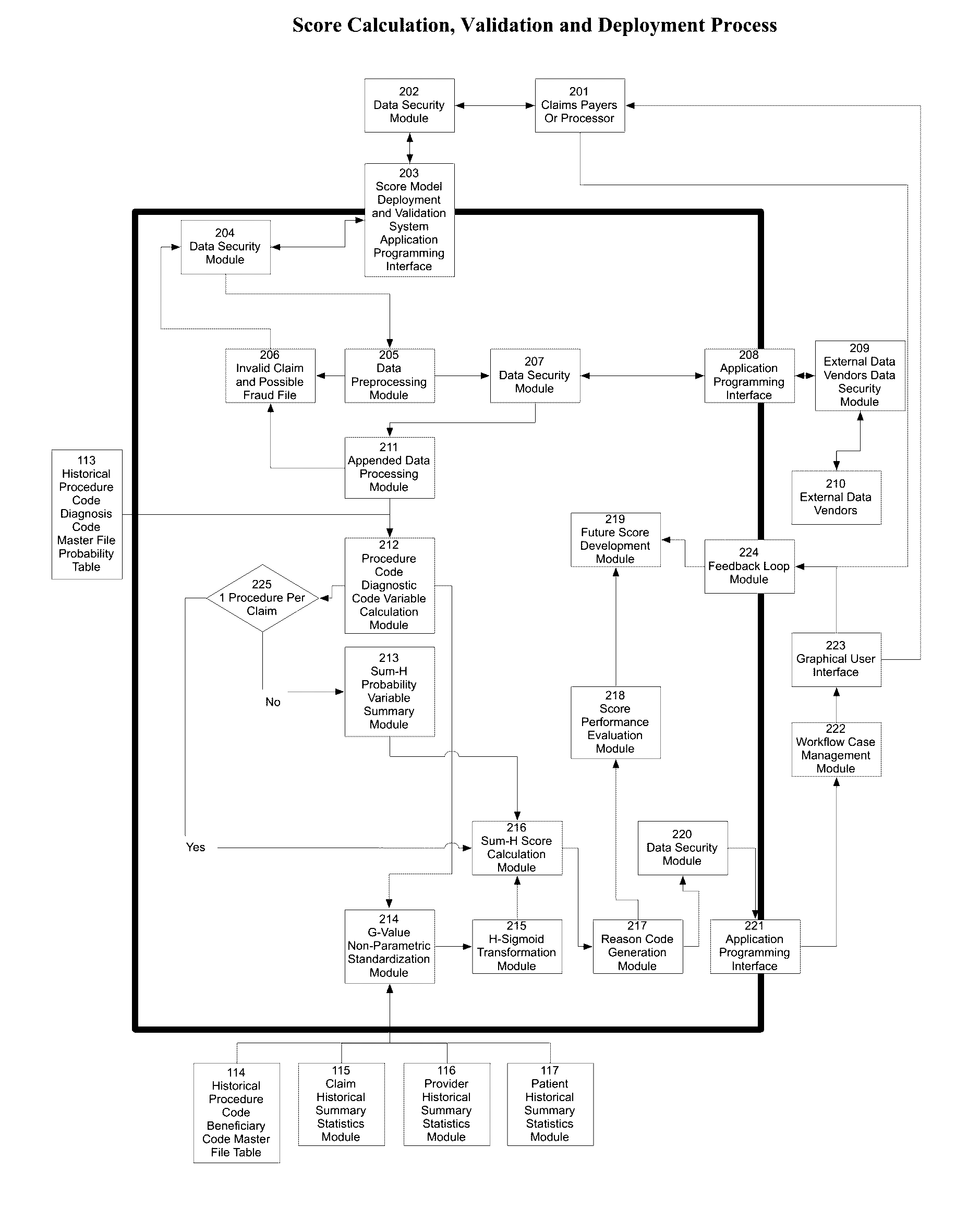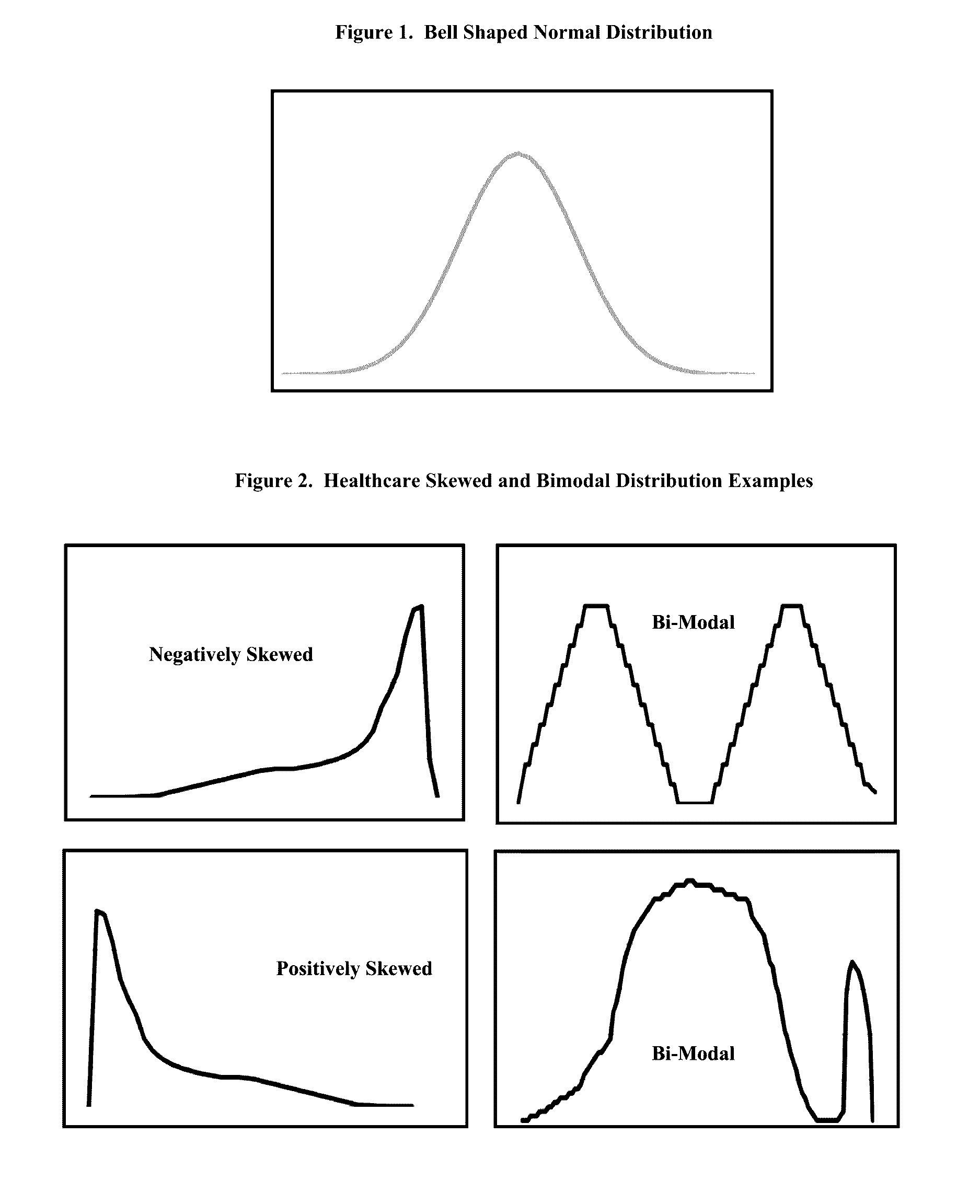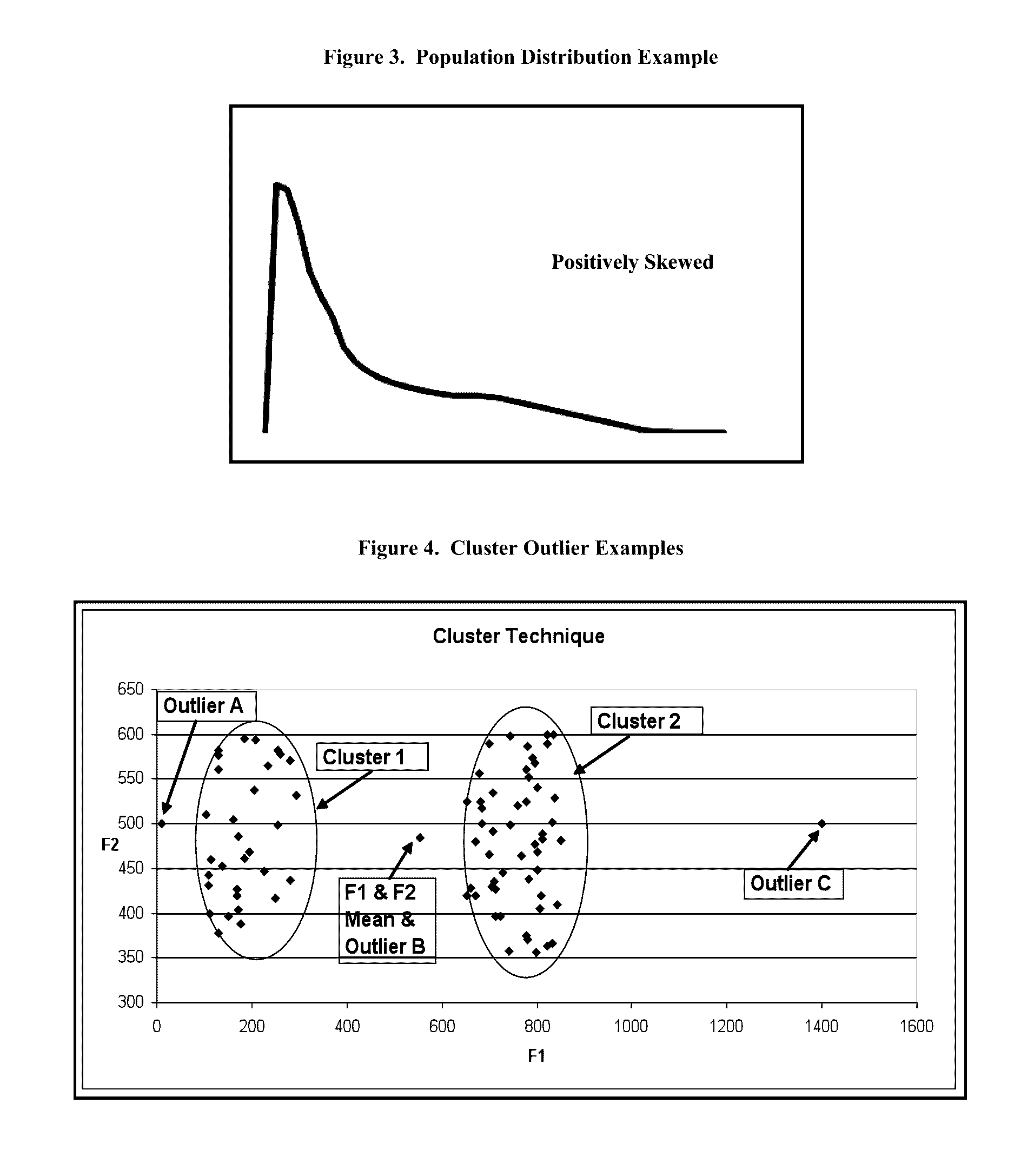Not only are these techniques deficient because they rely on parametric statistical techniques, they also do not focus on the area of interest when used in “fraud detection outlier models”.
If the provider submits claims for significantly more billed patient visits than some “expected” value, such as the arithmetic mean for similar providers in the same
geographic area, the providers peer group, it is considered an “outlier” and causes the score to be “high” or “risky”.
One common problem in outlier detection models is how to measure the likelihood that the number and kind of procedures submitted on a claim are appropriate and reasonable, given the diagnosis of the patient illness.
This situation makes it difficult to assess the appropriateness and reasonableness of the co-occurrence of the procedures with the diagnosis.
The problems encountered using a
tiered approach are, that in addition to the shortcomings of parametric techniques, it adds additional levels of complexity,
instability, and possible nonlinear dependence into the model, and it does not easily accommodate a controlled
feedback loop of actual validity / non-validity results from previous claim adjudications.
However, none of the prior art suggests using this probability table to detect providers who submit claims for a large number of unusual procedures or a large number of unusual procedures given a particular diagnosis.
None of the prior art addresses the fact that a single occurrence of a unique procedure or combination of procedure with a diagnosis may be a
data entry or coding error.
There may be a large number of these “single occurrence” codes because, aside from the risk of
data entry and encoding errors,
office staff, other than the
medical doctor, often enters the codes.
The result may be a code or code combination that has never before been seen or that does not make sense.
A primary challenge that is yet unresolved in the field of healthcare fraud detection outlier modeling is the problem of representing the combined interactions of related multiple events, either as groups of probabilities or variable values, into one meaningful monotonic scalar variable that is also sensitive to extreme values.
Using an unbounded number, like a Z-
Score, to represent an individual observation's fraud risk is not only sub-optimal, it also presents a more serious problem when aggregating Z-Scores by some other value, such as provider
specialty or geography.
With Z-Scores or
Quartile Scores, this is not possible because the Z-Scores and
Quartile Scores are unbounded on the high value side.
This disparity in high end values would lead to misleading comparison results.
However, the problem of combining multiple variable values into one scalar to represent the overall risk of a single observation being an outlier still remains.
This weighting can be based on simulations of the
test data even though there is not enough information from prior experience on which to base sound decisions about the weight values.
However, aside from still not representing the appropriate level of risk of the claim
record described above, because one of the variables has a
high probability of being an outlier, shows that this technique involving subjective
human judgment, often fails to monotonically rank the overall risk of fraud.
Because the healthcare industry is highly fragmented and because there have not been any large scale effective fraud detection solutions, there is no central resource of historical claims that can serve as examples of fraud.
When the objective is to detect outliers, as it is in nearly all “early stage” healthcare scoring models, it is counterproductive to use statistical techniques such as parametric statistics that are unpredictably influenced by the presence of outliers and often provide unreliable or inaccurate results.
When the objective is to find outliers, it is counter-productive to use statistical techniques that rely on the assumptions that the data is normally distributed and that there are no outliers in the data.
Prior art parametric statistical techniques such as Clustering,
Principal Component Analysis and Z-Scores are deficient because these techniques rely on important mathematical and statistical normality distribution assumptions and these assumptions are violated in medical data.
Even if these models do detect some frauds that are outliers, the violations of the underlying assumptions make their use as fraud detection models inadequate and unstable because they have low detection rates, high false-positive rates, high false-negative rates or they cannot deliver reasons for why an observation scored as it did.
Existing healthcare fraud detection systems are not adequate or are inappropriate for handling the diverse nature and multiple industry segments or dimensions in the healthcare industry.
Even the introduction of supervised
model development variable weighting will not improve these methods, because they are based upon the assumption of normality.
Another shortcoming in fraud detection outlier models is that the boundary or
cut-off criteria for labeling an observation as an outlier often cannot safely be adjusted to reflect stricter or more lenient degrees of “outlier-ness”.
Because skewed distributions and outliners can adversely influence observations that fall within the span of the IQR, used in the
Quartile Method, using the IQR in the Quartile method can result in lower fraud detection rates, higher false-positive rates and higher false-negative rates.
It is a necessary condition, but not sufficient, for a healthcare claim fraud detection
system to be able to detect “some of the” fraud.
Other than being merely a numeric measure, the outcome of this formula is questionable for
model building purposes.
They are calculating the two-way event likelihood of those procedures without consideration of the fact that the
medical diagnosis determines the procedures used to cure it, but that the procedures do not typically determine the
medical diagnosis.
These deficiencies, several in number, potentially make the Pathria and Tyler solutions unstable, inaccurate, untenable, incomplete and inflexible.
Although the prior art discusses the objective of discovering rare or unusual combinations of procedure and diagnosis, there is no evidence that the prior art deals with two important related issues:a. Discovering providers that submit unusually high numbers of unusual combinations of procedures and diagnoses.b. Discovering providers that submit unusually high numbers of unusual or rare procedures, by themselves, compared to others in their
specialty group or geography.
 Login to View More
Login to View More  Login to View More
Login to View More 


